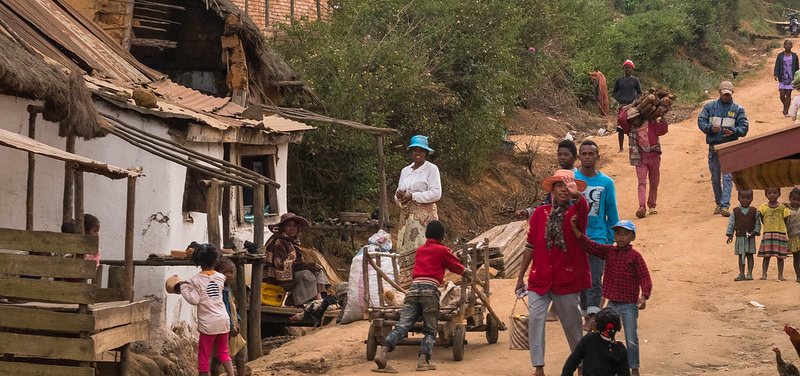Local Solutions Drive Madagascar’s Poverty Solutions
 Madagascar, the world’s fifth-largest island, is renowned for its unique biodiversity and natural resources. Yet, the country faces persistent poverty, with 75% of its population living below the national poverty line as of 2022. Rural areas are particularly affected, with poverty rates reaching 79.9%. Political instability, limited infrastructure and changing weather patterns destabilize the region and exacerbate the situation.
Madagascar, the world’s fifth-largest island, is renowned for its unique biodiversity and natural resources. Yet, the country faces persistent poverty, with 75% of its population living below the national poverty line as of 2022. Rural areas are particularly affected, with poverty rates reaching 79.9%. Political instability, limited infrastructure and changing weather patterns destabilize the region and exacerbate the situation.
Battling Hunger and Malnutrition
Since 2019, the southern regions of Madagascar have been grappling with severe droughts, leading to famine-like conditions. Approximately 1.3 million people are food insecure, with malnutrition rates among children under 5 doubling in recent years. In response, the World Food Programme (WFP) and UNICEF have collaborated to deliver life-saving nutrition supplies, such as Plumpy’Sup, to malnourished children in remote areas. Innovative methods, including Unmanned Aircraft Systems, have been employed to reach isolated communities.
Madagascar’s reliance on rain-fed agriculture makes it vulnerable to the harsh climate. Prolonged droughts have devastated crops, leading to food shortages and economic hardship. To combat this, Madagascar’s poverty solutions include programs promoting climate-smart agriculture. These initiatives teach farmers sustainable practices, such as using drought-resistant crops and mulching, to improve food security and protect the environment.
International Support and Development Projects
The U.S. Agency for International Development (USAID) committed $22.1 million to support Madagascar’s southern regions through projects like Vikina and Harea. These initiatives aim to build resilience, improve food security and promote sustainable farming practices. Additionally, USAID’s Mikajy project focuses on linking biodiversity conservation with sustainable livelihoods. By supporting community-based enterprises and introducing conservation farming, the project helps communities achieve economic growth while preserving natural resources.
In 2023, the World Bank approved a $250 million credit to expand access to social protection for extremely poor households across all 23 regions of Madagascar. The initiative aims to strengthen the national safety net system and improve household resilience to economic and climate-related shocks. In the same year, the World Bank committed an additional $400 million to the Digital and Energy Connectivity for Inclusion in Madagascar Project (DECIM). This program aims to double the country’s energy access from 33.7% to 67% and expand internet connectivity by reaching 3.4 million new users. The investment supports long-term development by promoting digital inclusion, clean energy and infrastructure growth.
Community-Driven Initiatives
Local communities are also taking action in Madagascar’s poverty solutions by preserving their lush forests. Reforestation projects, such as those by Eden Reforestation Projects, aim to restore mangroves and upland forests while providing both environmental benefits and employment opportunities. In the Makay region, eco-tourism initiatives promote low-impact tourism, generating income for local communities while funding conservation efforts. Microfinance programs, like those supported by Money for Madagascar, empower individuals to start small businesses, fostering economic independence and community development.
Looking Ahead
By focusing on sustainable development, climate resilience and economic empowerment, Madagascar continues to build a path toward resilience and improved well-being for its people.
– Giovanni Garcia
Giovanni is based in Long Beach, CA, USA and focuses on Good News and Politics for The Borgen Project.
Photo: Flickr
